Choosing the Best Charger for Your iPhone 11 Pro
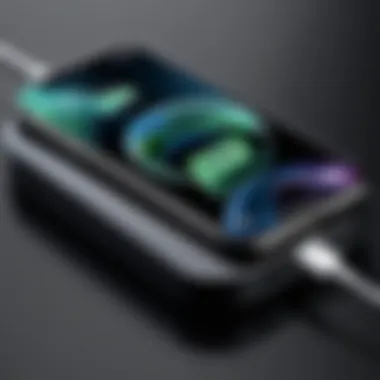
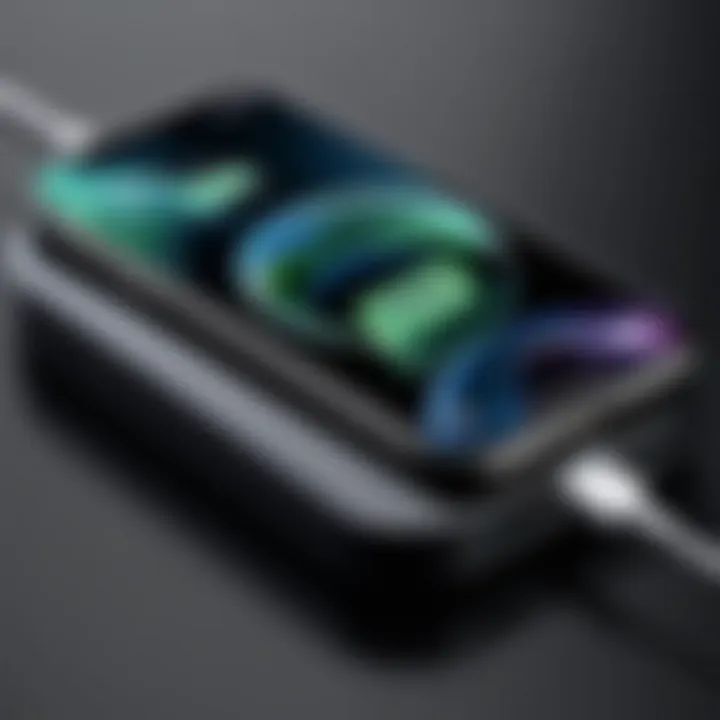
Intro
Selecting the right charger for the iPhone 11 Pro may seem like a trivial task, but it holds significant importance in ensuring optimal performance and longevity of the device. With various options available in the market, understanding the technology behind these chargers is crucial. The iPhone 11 Pro, notable for its advanced features and capabilities, requires chargers that are compatible and efficient. As smartphones today become more powerful, the need for adequate charging solutions becomes paramount. This article will guide you through the essential considerations, from examining charger specifications to analyzing usability and design.
Overview of the Technology
When choosing a charger for the iPhone 11 Pro, it is essential to start with a clear understanding of the underlying technology. This section will highlight key specifications and unique selling points that differentiate chargers available today.
Key specifications
The iPhone 11 Pro supports fast charging, which can significantly reduce the time required to recharge the device. To effectively leverage this capability, it’s important to match it with an appropriate charger.
- Power Delivery (PD): This is the standard your charger should adhere to when purchasing. iPhone 11 Pro utilizes USB Power Delivery for fast charging. It can achieve up to 18 watts when using compatible chargers.
- Output Voltage and Amperage: An ideal charger should provide an output voltage of 5-20 volts and an output current of at least 2.4 amps for effective charging.
Unique selling points
Charger manufacturers often provide unique features that may enhance usability:
- Portability: Many chargers are designed to be compact and easily portable, making them suitable for travel.
- Build Quality: Durable materials ensure a longer lifespan and better protection against wear and tear.
- Smart Technology: Some chargers include chipsets that automatically adjust power output based on connected devices, ensuring optimal charging speeds without the risk of overheating.
"Choosing a charger isn't merely a matter of picking any option. Ensure alignment with your device's specifications for optimal performance."
Design and Build Quality
In addition to technology, the design and build quality of a charger also significantly affect user experience. An aesthetically pleasing and properly constructed charger can enhance the overall enjoyment of using the iPhone 11 Pro.
Material used
Chargers can vary significantly in materials:
- Plastic vs. Metal: Many chargers are made of plastic, which can be effective but might not provide the same level of durability as metal alternatives.
- Heat Resistance: Chargers made from heat-resistant materials are critical in preventing overheating, a common issue during prolonged use.
Ergonomics and usability
Usability is another aspect to consider. Chargers should not only look good but also be functional:
- Cable Length: Short cables may limit the charging locations, while longer cables add flexibility.
- Form Factor: A charger that is bulky can be cumbersome, especially if you plan to carry it regularly.
In summary, selecting the best charger for the iPhone 11 Pro involves an understanding of the essential technologies and specifications, as well as appreciation for the design and usability of the product. This foundational knowledge will assist buyers in making informed decisions that enhance their device's performance.
Understanding Charging Technology
Charging technology is fundamental when selecting the appropriate charger for your iPhone 11 Pro. Understanding this technology provides insights into how different charging methods affect performance and efficiency. As smartphones become more integral to daily life, the relevance of effective charging cannot be overstated. The right charger will not only enhance usability but also prolong the battery's overall lifespan.
Knowing the specifics of charging methods allows users to optimize their charging habits. Different chargers operate through distinct mechanisms, and choices made in this aspect can lead to significant variations in charging times and effectiveness. Power delivery is not just an industry term; it directly affects how efficiently a device receives power.
The following sections will delve into the various charging methods available and the importance of power delivery standards.
Overview of Charging Methods
Charging methods for the iPhone 11 Pro can be broadly categorized into three primary types: wall chargers, car chargers, and wireless chargers. Each method comes with its own advantages and limitations.
- Wall Chargers: These are the most commonly used chargers, known for providing a direct power supply. Wall chargers come in various power ratings, affecting their charging speed.
- Car Chargers: For those who are frequently on the go, car chargers offer a practical solution. While they are convenient, factors like compatibility with the vehicle's power outlet can affect their performance.
- Wireless Chargers: Wireless charging technology has gained popularity, allowing for a more convenient charging experience. However, the efficiency can vary based on the charger’s design and specifications.
By understanding these methods, users can select a charger suited to their specific needs and environments.
Importance of Power Delivery
Power delivery is a term that refers to the technology used in USB connections to transfer power more efficiently. It is crucial for devices like the iPhone 11 Pro, which supports fast charging.
A few key points about power delivery:
- Increased Charging Speed: Chargers equipped with power delivery technology can deliver higher wattage to the device. This is important for reducing charging times significantly compared to standard charging methods.
- Device Compatibility: It ensures that various devices can receive the appropriate amount of power they require. For the iPhone 11 Pro, using a power delivery charger can optimize the charging process.
- Data Transfer Capabilities: While primarily focused on power transfer, USB power delivery also allows for data transfer. This dual capability is beneficial for users who often connect their devices for synchronization.
In summary, understanding power delivery not only helps in optimizing charging speeds but also enhances the overall user experience with the iPhone 11 Pro.
Specifications of iPhone Pro
Understanding the specifications of the iPhone 11 Pro is crucial for selecting the right charger. This smartphone is designed with specific power needs that enhance its performance and durability. Knowledge of these specifications ensures that the chosen charger not only fits but also maximizes functionality.
Battery Capacity Details
The iPhone 11 Pro features a battery capacity of 3046 mAh. This size is significant for users who rely on their devices throughout the day. A capable charger ensures the phone charges to full capacity, thus prolonging usability. Battery health is another consideration; consistent use of chargers that do not meet specifications can degrade battery life over time. Therefore, selecting a charger that aligns with this capacity helps maintain optimal performance.
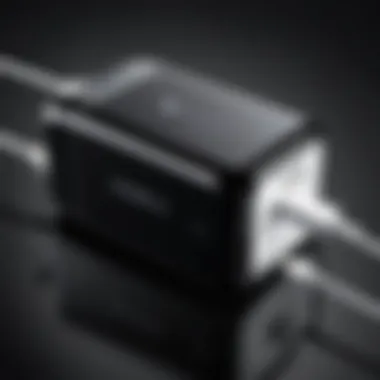
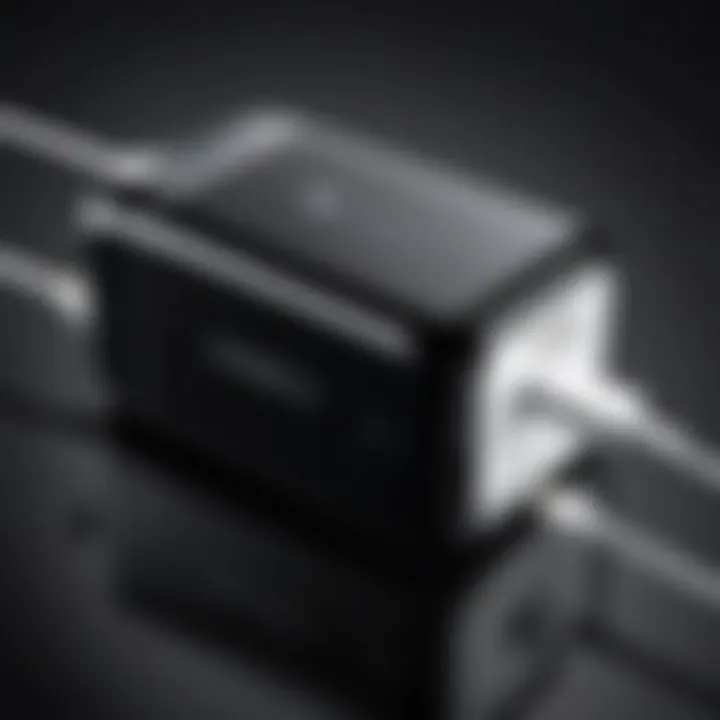
Charging Input Requirements
Charging input requirements for the iPhone 11 Pro are another critical aspect to consider. The phone supports fast charging via USB Power Delivery (USB PD). Using a charger that can output at least 18 watts is necessary for fast charging functionality. This not only reduces charging time but also handles larger power demands during operation. It is essential to check the compatibility of chargers with these input requirements to ensure they can deliver the correct power without causing damage.
Keeping chargers that comply with Apple’s standards minimizes risks associated with overheating and overcharging, crucial for both safety and performance.
In summary, comprehending these specifications aids tech-savvy individuals in making informed decisions when investing in a charger for their iPhone 11 Pro. By selecting chargers that align with battery capacity and input requirements, users can enhance their overall experience.
Different Types of Chargers
When selecting the best charger for the iPhone 11 Pro, understanding the different types of chargers available is crucial. Each type has distinct advantages and is suited for different situations. This section will explore wall chargers, car chargers, and wireless chargers. Knowing the characteristics and uses of each can help you make an informed decision based on your lifestyle and needs.
Wall Chargers
Wall chargers remain one of the most common and reliable options for charging mobile devices. They plug directly into an electrical outlet, providing a stable power supply. This characteristic makes wall chargers a beneficial choice for charging at home or in the office.
Advantages of Wall Chargers
One significant advantage of wall chargers is their efficiency. They typically offer faster charging speeds compared to other methods. The direct connection to the power source minimizes energy loss. This results in quicker battery replenishment for your iPhone 11 Pro.
Another key characteristic is that these chargers are widely available. Most people have at least one wall charger at home or work, making them an accessible option. Their reliability is underlined by the fact that they are often included with devices such as the iPhone.
Power Ratings to Consider
Power ratings are essential when choosing a wall charger. Chargers come in various wattages, which directly influence their charging speed. For the iPhone 11 Pro, a charger with at least 18 watts is recommended for optimal fast charging. A higher wattage might not necessarily charge the device faster past a certain point, but it ensures compatibility with different devices.
When considering power ratings, it is also important to check for compatibility. While many chargers can deliver varying degrees of power, using the right wattage is essential to avoid damage or inefficiency. A charger with a lower power rating may charge the device more slowly, making it less favorable.
Car Chargers
Car chargers are designed for use in vehicles. They are especially valuable for people who spend a significant amount of time driving.
Situations for Using Car Chargers
Car chargers are beneficial in situations where access to a wall outlet is not possible. Commutes, road trips, or extended travel periods are ideal scenarios. Utilizing a car charger allows you to maintain your device's battery level while on the move. This is particularly helpful for navigation apps and music streaming while driving, as these activities can drain the battery quickly.
Another significant aspect of car chargers is their convenience and ease of use. Many modern vehicles come with USB ports, enabling you to plug in your charger without requiring additional adapters. This feature enhances the experience, particularly during long drives.
Compatibility Factors for Vehicles
Compatibility with a vehicle’s charging system is crucial when selecting a car charger. Some car chargers may not fit properly in certain vehicle models or can be limited by a vehicle's USB output. It’s essential to ensure that the charger is compatible with your vehicle.
Also, various car chargers have different amperage outputs, which can affect charging speed. Choosing a compatible and efficient car charger ensures that your iPhone 11 Pro charges effectively while you are on the road.
Wireless Chargers
Wireless chargers offer a cable-free solution for powering your devices. This method is growing in popularity due to its convenience and modern aesthetic.
How Wireless Charging Works
Wireless charging uses electromagnetic fields to transfer energy from the charger to the device. A charging pad creates a magnetic field, which the iPhone 11 Pro utilizes to convert energy into battery power. This method is particularly advantageous as it eliminates the hassle of tangling wires.
Wireless charging is convenient, offering a neat alternative that cuts down on clutter.
However, it is generally important to note that wireless charging may not be as fast as traditional methods. For maximum charging efficiency, you should align the device properly on the charger.
Pros and Cons of Wireless Options
While convenient, wireless charging does come with its pros and cons.
Pros:
- Convenience: Simply place your iPhone on the pad without fiddling with cables.
- Aesthetics: Many find wireless chargers to be more visually appealing.
Cons:
- Speed: Generally slower compared to wired options.
- Heat Generation: Wireless charging can lead to the device heating more than usual, which can affect battery health over time.
Understanding the strengths and limitations of each charger type is key to making an informed decision for your iPhone 11 Pro.
Fast Charging Explained
Fast charging has become a pivotal feature in modern charging technology. For users of the iPhone 11 Pro, understanding this technology is essential. It significantly impacts how quickly your device can regain power, optimizing daily usage and efficiency. In an age where time is a critical commodity, fast charging is more than just a convenience; it is a necessity. This section will delve into what fast charging is and how it specifically aligns with the requirements of the iPhone 11 Pro.
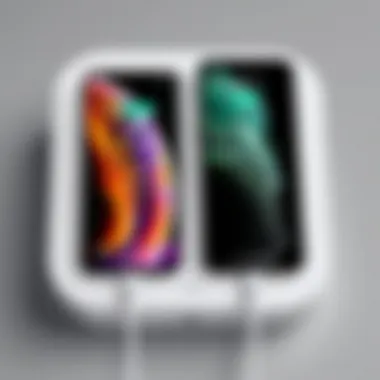
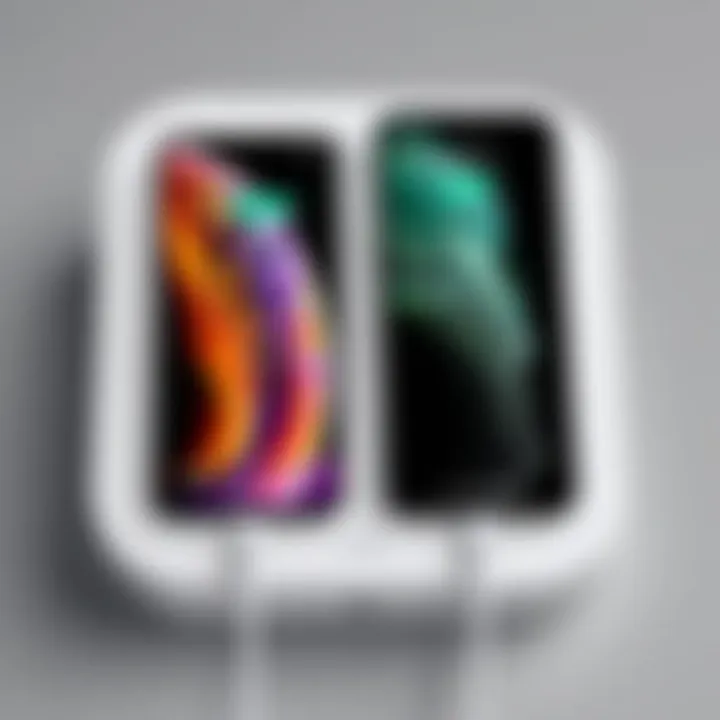
What is Fast Charging?
Fast charging refers to the method of delivering higher levels of electricity to a smartphone in a reduced time frame. This is accomplished through specific protocols that manage how much power is supplied to the device at any given time. Traditional charging methods typically provide a lower voltage, meaning recharging takes substantially longer.
Here are key elements of fast charging:
- Increased Current: Fast chargers deliver a higher current than standard chargers.
- Voltage Adjustment: Many fast charging technologies adjust the voltage dynamically based on the device’s needs.
- Smart Communication: Devices and chargers communicate in real-time, optimizing the charging process.
This technology is integral to maintaining a productive and efficient mobile lifestyle. Users can quickly recharge their devices in as little as 30 minutes, minimizing downtime.
Compatibility with iPhone Pro
The iPhone 11 Pro is designed to support fast charging, making it compatible with various chargers that adhere to certain standards. Apple’s proprietary fast charging capabilities require a compatible charger, ideally one rated at 18 watts or higher. Using a USB-C charger, the iPhone 11 Pro can leverage fast charging standards defined by Power Delivery (PD).
Considerations for Fast Charging with iPhone Pro:
- Charger Selection: To take advantage of these fast charging features, consumers should opt for chargers explicitly designed for fast charging, like the Apple 20W USB-C Power Adapter.
- Cable Quality: A high-quality cable that supports fast charging is also crucial. Avoid using generic cables as they may not provide the necessary power.
- Heat Management: During fast charging, devices may generate heat. It’s practical to let the iPhone cool down if it becomes excessively warm while charging.
It is essential to combine a fast charger with the correct cable to unlock the full potential of fast charging capabilities.
In summary, understanding fast charging is not merely about convenience; it is pivotal for maximizing your iPhone 11 Pro's functionality. Awareness of how this technology works and its compatibility with your device equips you to make informed decisions when selecting a charger.
Key Features of an Ideal Charger
When choosing a charger for the iPhone 11 Pro, understanding key features is essential. These features can determine not only the efficiency of charging but also the safety and longevity of the device. A well-chosen charger can enhance the experience of using your iPhone and allow for optimal performance.
Safety Mechanisms
Overcurrent Protection
Overcurrent protection is a vital feature found in many chargers. This system prevents excess current from exceeding the designated limits during charging. The primary characteristic of this mechanism is that it automatically shuts down the power supply when it detects a surge. This is beneficial as it protects the iPhone 11 Pro's battery from potential damage due to overheating or premature wear.
One unique aspect of overcurrent protection is its reliability. Many users tend to forget about the risks of charging in environments with poor power regulation, making this safety feature crucial. However, if overcurrent protection malfunctions, it could lead to device damage, which is a disadvantage to consider.
Overheat Protection
Overheat protection plays a similarly crucial role in charger safety. It helps prevent the charger and device from reaching temperatures that could lead to battery damage or fire. The fundamental aspect of overheat protection is its ability to shut down the charging process if temperatures rise too high. This feature is popular among consumers who prioritize safety during long charging sessions.
In terms of advantages, overheat protection can prolong the life of both the charger and device. A downside might include slower charging times if the system activates frequently, especially in warm environments. As such, it is important to find a balance depending on usage patterns.
Portability and Design
Size Considerations
Size considerations are important when selecting a charger. In today’s fast-paced world, many users need chargers that are compact and easy to transport. A small charger can fit easily in a handbag or pocket, making it convenient for use on the go.
A significant benefit of size considerations is the reduction in weight, which is appealing to travelers and commuters. However, smaller chargers may sometimes sacrifice power output or features, so users must weigh portability against performance.
Aesthetic Appeal
Aesthetic appeal has become increasingly relevant in consumer choices, particularly among tech-savvy individuals. A charger that looks attractive can enhance the overall experience of using a device. The design can range from sleek and modern to more playful styles, allowing users to express personal taste.
The appeal in aesthetics lies in how a well-designed charger can complement the iPhone 11 Pro. However, focusing too much on design might lead to neglecting functionality. Therefore, the ideal charger strikes a balance between attractive aesthetics and robust performance.
Understanding these key features aids in making an informed decision when purchasing a charger. Prioritizing safety, portability, and design can significantly enhance user experience.
These features combined outline what to consider when selecting the best charger for the iPhone 11 Pro.
Evaluating Charger Brands
When selecting a charger for your iPhone 11 Pro, evaluating the brands provides a framework for determining reliability and performance. The charger brand can significantly influence not only the quality of the charging experience but also the safety and compatibility of the device with its accessories. Specific brand features, customer satisfaction ratings, and technical innovations should guide your choices. Prioritizing reputable brands can enhance the longevity of your device’s battery and optimize charging efficiency.
Reputable Brands in the Market
Apple's Own Chargers
Apple offers a range of chargers tailored for the iPhone 11 Pro, including the 20W USB-C Power Adapter and MagSafe Charger. These chargers are designed to work seamlessly with Apple products, ensuring optimal power delivery and safety protocols. One key characteristic of Apple's chargers is their adherence to strict quality control standards, which boosts their reliability.
A unique feature is their compatibility with Apple's fast charging technology, allowing the iPhone 11 Pro to charge up to 50% in around 30 minutes. Users report favorable experiences in terms of consistent performance and durability. However, the primary disadvantage could be the higher price relative to some third-party options, which might deter budget-conscious customers.
Third-Party Alternatives
Third-party chargers provide a diverse selection of options that can be both affordable and effective. Companies like Anker and Aukey produce chargers that support Power Delivery and fast charging capabilities. A notable feature of many third-party chargers is their universal compatibility; they often work with a wide range of devices, not just Apple products.
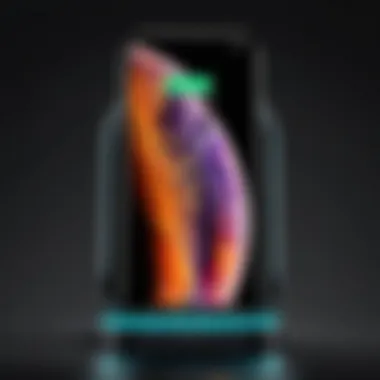
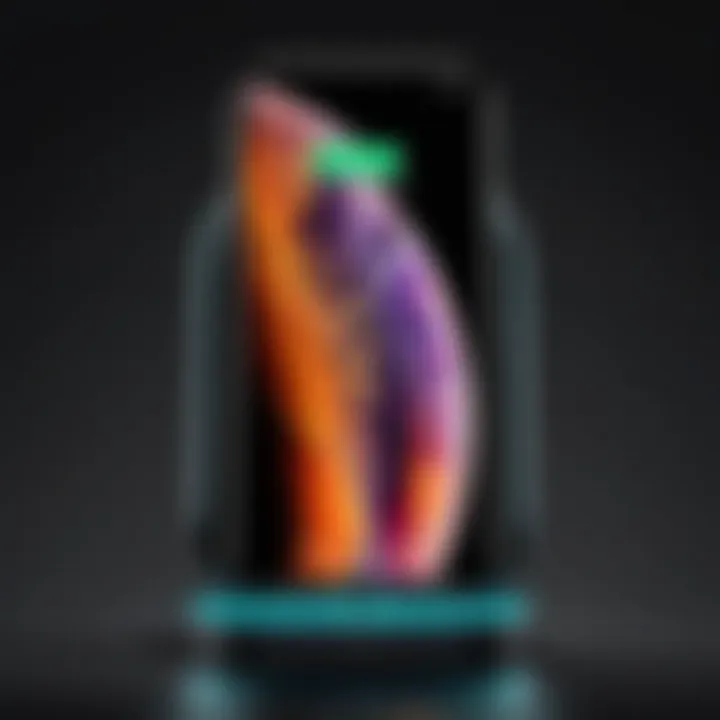
The cost-effectiveness of these alternatives makes them appealing choices for many users. Furthermore, some third-party brands offer additional features, like multiple ports for charging several devices at once. The potential downside, however, is the variability in quality and safety standards among these brands. Users may want to carefully check for certifications, like MFi (Made for iPhone), to ensure the product meets Apple's standards.
Brand Comparison
When comparing chargers, several factors come into play. Apple’s chargers typically offer guaranteed compatibility and optimal performance but may be pricier. In contrast, third-party alternatives can provide budget-friendly options but come with varying degrees of quality and support. Users are encouraged to weigh price against performance, durability, and support when choosing a charger. Each option presents benefits and trade-offs, which should be understood in the context of the user’s specific charging needs.
Price Considerations
When selecting a charger for the iPhone 11 Pro, price considerations play a crucial role. The price can reflect the quality, functionality, and even the longevity of the product. Understanding the implications of different price ranges can help users determine which charger best meets their needs and budget.
Budget vs. Premium Options
In the realm of chargers, options vary from budget-friendly to premium ones.
- Budget Chargers: These typically offer basic functionality at a lower cost. While they might be an enticing option for those looking to save money, it often comes at the expense of durability and advanced features. Battery health might not be a priority for these manufacturers, which can lead to overheating or slower charging speeds. Therefore, while they provide immediate savings, the risk of damaging the device or needing replacements sooner can negate these savings.
- Premium Chargers: Higher-priced chargers often bring advanced features such as better safety mechanisms, faster charging capabilities, and superior materials. Brands like Apple and Anker offer a range of options that align well with the iPhone 11 Pro’s specifications. Investing in a premium charger can enhance the overall user experience through efficient power delivery and increased safety features. The initial costs may be higher, but the long-term benefits often make these options more appealing.
Long-term Value Analysis
Evaluating long-term value is essential when selecting a charger for the iPhone 11 Pro. A lower-priced charger might seem attractive initially, but this may cost more over time due to possible damage to the phone’s battery or replacement needs.
- Durability and Longevity: Premium chargers are designed to withstand daily wear and tear. Investing in a quality charger often means less frequent replacements, which leads to cost-effectiveness in the long run. Battery health management can prevent long-term deterioration of the iPhone’s battery, maintaining optimal performance.
- Service and Support: Purchasing from reputable brands provides assurance of customer support. In the unlikely event of a malfunction, many premium brands offer warranties or guarantees. This further solidifies the value of investing in a quality charging solution.
"While upfront costs may deter buyers, the potential savings from longevity and performance justify premium spending on chargers."
User Experience and Reviews
User experience and reviews play a pivotal role in selecting the right charger for your iPhone 11 Pro. As consumers navigate through various options available in the market, feedback from actual users provides invaluable insights. This section will examine the significance of user experiences and aggregated reviews, focusing on specific elements that can aid in making an informed decision.
Positive user experiences often stem from reliable performance under everyday usage. When consumers share their feedback on different chargers, it reveals how those products function in real-world scenarios. This information is vital for potential buyers who seek reassurance regarding the effectiveness and durability of a charger. Reviews typically highlight aspects such as charging speed, compatibility with iPhone 11 Pro, and overall satisfaction.
Another critical consideration in user feedback is the comparison of various brands and models. Evaluating customer experiences lets potential buyers identify which products consistently deliver high performance. Through general consensus, it becomes easier to rule out underperforming chargers, ensuring users invest in quality options.
Customer Feedback Analysis
Customer feedback analysis involves a detailed examination of testimonials collected from various platforms. Online retail sites, dedicated tech forums, and social media often serve as sources of this data. These reviews frequently discuss specific functionalities and reliability issues that earlier users may have encountered.
For instance, customers might express concerns about overheating or charging inefficiency. This information can act as a warning for prospective buyers. Conversely, positive feedback typically illustrates satisfaction with fast charging capabilities or compact designs.
When analyzing feedback, it is also essential to look for patterns. If multiple users report similar experiences, it indicates a larger trend concerning a specific product. Overall, feedback analysis enables potential buyers to make informed choices based on collective user sentiment rather than isolated experiences.
Expert Recommendations
Expert recommendations are another essential factor in the purchasing decision process. Influencers and tech review websites bring forth professional insights that can enhance understanding of charging solutions.
Influencers in Technology
Influencers in technology often provide valuable content through reviews, tutorials, and product demonstrations. Their unique ability to present information in an engaging manner makes them a beneficial choice for consumers looking to understand chargers for devices like the iPhone 11 Pro.
These influencers often test products extensively and share personal experiences. This practical insight can assist viewers in distinguishing between high-quality and mediocre options. Moreover, influencers often stay updated on the latest tech trends, providing timely recommendations that reflect current market conditions. However, it's important to consider potential biases that may exist as some influencers may favor brands due to sponsorships.
"Influencers provide a relatable perspective, showcasing how a product fits into their daily lives. This can be very informative for viewers."
Tech Review Websites
Tech review websites stand out for their thorough analysis and objective evaluations. Such platforms typically employ professional reviewers with extensive technical knowledge. They deliberate on critical factors such as performance metrics, safety features, and usability of chargers, providing a more analytical viewpoint compared to casual reviews.
One unique feature of these websites is the comparative analysis they often conduct. They equip readers with side-by-side assessments of different brands and models based on predetermined criteria. This structured approach facilitates clearer understanding when deliberating on purchase options. Though tech review websites can sometimes be technical in nature, they aid consumers in making better decisions backed by reliable data and expert commentary.
Closure
In the pursuit of selecting the best charger for the iPhone 11 Pro, comprehending various factors is crucial. The charger can significantly impact your device's performance and longevity. A well-chosen charger not only ensures efficient energy delivery but also safeguards your device against potential risks. Considering elements such as compatibility, charging speed, and safety mechanisms is integral to making an informed decision.
Summarizing Best Practices
To summarize the best practices when selecting a charger, focus on the following points:
- Choose a certified charger: Look for chargers that are MFi certified by Apple. This ensures compatibility and reliability.
- Prioritize fast charging capability: Opt for chargers that support Power Delivery to take advantage of faster charging speeds.
- Consider safety features: Look for models with overcurrent protection and overheat protection to safeguard the battery health of your iPhone.
- Evaluate your usage scenarios: Depending on your lifestyle, decide between wall chargers, car chargers, or wireless options that best fit your needs.
By recognizing these practices, users can mitigate risks and enhance their charging experience.
Final Recommendations
Ultimately, selecting the best charger for the iPhone 11 Pro comes down to understanding your specific needs. Here are a few recommendations:
- For frequent travelers: A compact wall charger with international voltage compatibility can be ideal.
- For high-speed charging: Consider using Apple's 20W USB-C charger, which is designed for maximum efficiency.
- For convenience: A reputable wireless charger, like the Belkin BOOST↑CHARGE, offers a seamless charging experience at the cost of some speed.
By keeping these options in mind, you will be able to choose the right charger that fulfills your charging requirements, ensuring optimal performance for your iPhone 11 Pro.
Ensuring that you have the right charger is paramount. It directly affects the efficiency and safety of your device. By making informed choices, you protect your tech investment.







